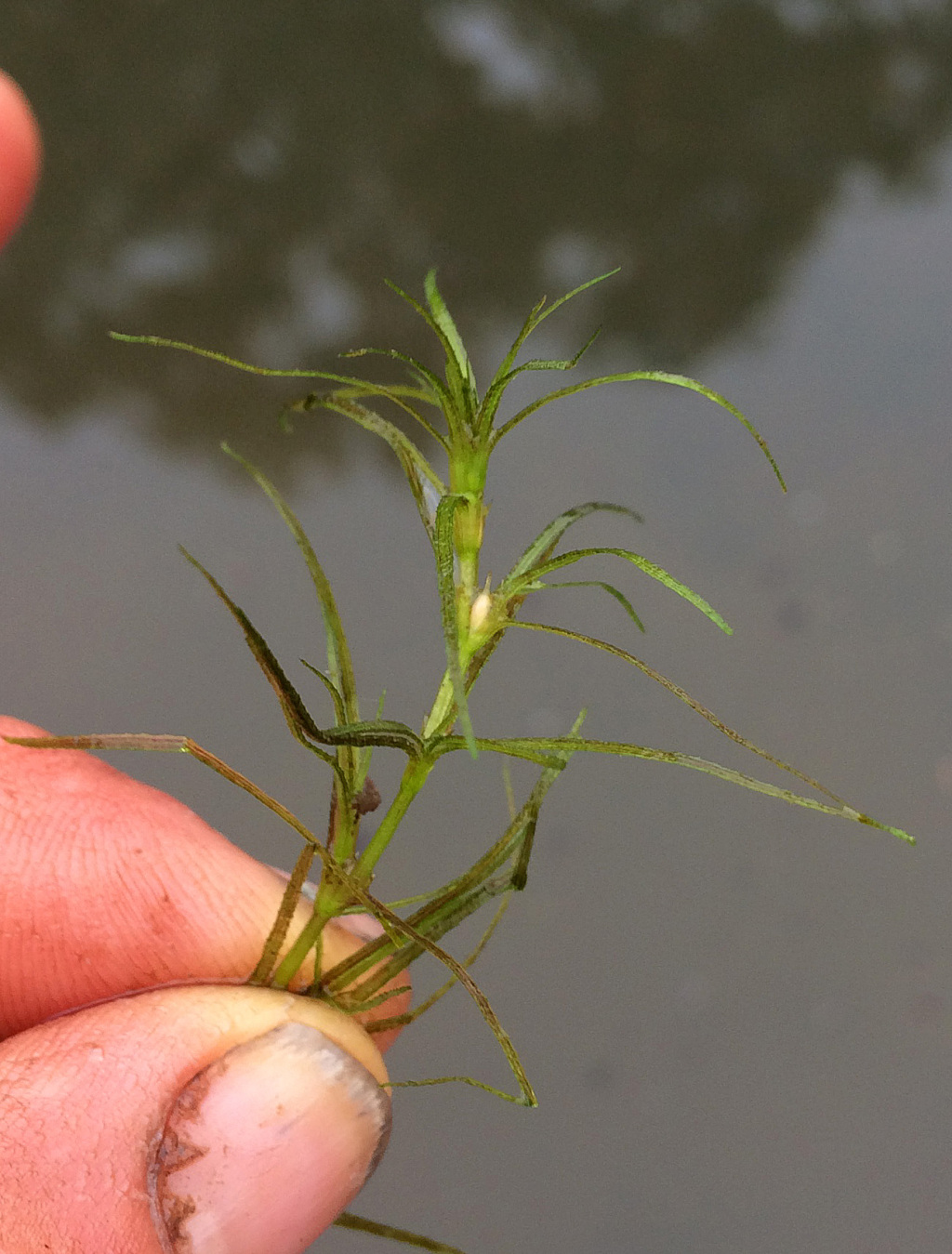Najas
Submerged aquatic herbs, annuals or perennials, monoecious or dioecious, rooting from base and basal nodes. Stem and branches slender, fragile. Leaves linear, subopposite or pseudo-whorled, sessile; base sheathing; margin toothed; leaf-sheath scales 2, small, axillary (subtended by sheath). Flowers very small and inconspicuous, at base of branches, 1–4 together, unisexual. Male flowers enclosed by 2 cup-like structures, an outer whorl which is usually fused into a tube, and an inner whorl which is membranous, fused, flask-shaped and 2-lobed distally; stamen 1, sessile or almost so. Female flower with cup-like structure absent; carpel 1; ovary ellipsoid; style subconical to cylindric, stigmas 2–4, linear. Fruit dry, indehiscent, 1-seeded, style and stigmas persistent; seed oblong; testa hard and brownish.
Cosmopolitan genus of about 35 species, 2 in Victoria. Pollination takes place completely submerged. Elongation of the stalk of the anther ruptures the surrounding scale-tube. The pollen is released apically and is then transported through the water to the female flowers.
Najas is sometimes included in a monogeneric familiy Najadaceae.
Conn, B.J. (1994). Najadaceae. In: Walsh, N.G.; Entwisle, T.J., Flora of Victoria Vol. 2, Ferns and Allied Plants, Conifers and Monocotyledons, pp. 155–156. Inkata Press, Melbourne.
 Spinning
Spinning


